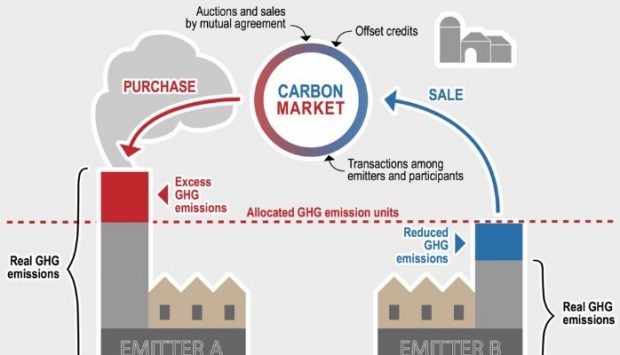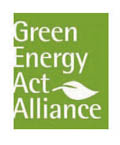In late September 2017, Ontario formally signed an agreement to join the Western Climate Initiative – a cap-and-trade alliance Québec and California have held since 2014 – thus creating the world’s second-largest carbon market.

This cross-border partnership is a crucial component in the Canadian government’s push to reduce greenhouse gases by 30 percent below 2005 levels by 2030.
Ontario had launched its own cap-and-trade system earlier in 2017, and had three sold-out auctions in a row. However, the new agreement will allow participants from all three locations to use carbon allowances issued by any of the three governments interchangeably, and to hold joint carbon auctions.
What Is Cap and Trade?
Cap and trade is an approach that allows the free market to set a price on carbon. The goal of cap and trade is to reduce carbon emissions cost-effectively.
Under a cap-and-trade program, the cap refers to a limit on greenhouse gas emissions, which grows smaller over time. Companies that exceed this cap pay progressively stricter penalties. The trade part is a market for companies to buy and sell allowances that permit them to emit only a certain amount.

Carbon Cap-And-Trade System – courtesy of NEEC
Trading gives companies a strong incentive to save money by cutting emissions. Companies that go over the cap must buy allowances to cover their excess at an auction. On the other hand, companies that produce less than the limit would have allowances available to purchase at the auction.
The cap-and-trade system is designed to help move away from carbon-intensive forms of energy over time by giving them a strong incentive to cut emissions.
A Proactive Approach to Climate Change
As said, while current Republican U.S. leadership has been actively moving backward in their approach to climate change – even becoming the only nation to withdraw from the landmark Paris Climate Accord in June 2017 – that is even more reason to take proactive steps to avert catastrophic climate change.
“Currently, we are not following a climate agenda in Washington and at the highest levels in America, but at the grassroots, at the state level, there is a very powerful movement growing by the day to take the steps necessary to make sure that our planet, that our organized civilization endures, and not only endures, but prospers because we align ourselves with nature,” he said.
“The fact that some deny doesn’t mean that others are not taking action.”
The Western Climate Initiative at a Glance
Ontario’s entry into the Western Climate Initiative with Québec and California will strengthen North America’s largest carbon market, the only one developed and managed by governments from two different countries.
The collective carbon market created by the Western Climate Initiative is second only to the European Union in size.
- The Western Climate Initiative covers a population of more than 60 million people and about CA $4 trillion in GDP. By linking, the three governments will harmonize regulations and reporting, while also hosting joint auctions on greenhouse gas emission allowances.
Momentum on carbon markets is also growing elsewhere in the Americas. Mexico is in the process of developing its own national emission trading system, and has expressed an interest in linking such a system with the Western Climate Initiative.


 Ontario’s entry into the Western Climate Initiative with Québec and California will strengthen North America’s largest carbon market, the only one developed and managed by governments from two different countries.
Ontario’s entry into the Western Climate Initiative with Québec and California will strengthen North America’s largest carbon market, the only one developed and managed by governments from two different countries. The collective carbon market created by the Western Climate Initiative is second only to the European Union in size.
The collective carbon market created by the Western Climate Initiative is second only to the European Union in size. Momentum on carbon markets is also growing elsewhere in the Americas. Mexico is in the process of developing its own
Momentum on carbon markets is also growing elsewhere in the Americas. Mexico is in the process of developing its own 







